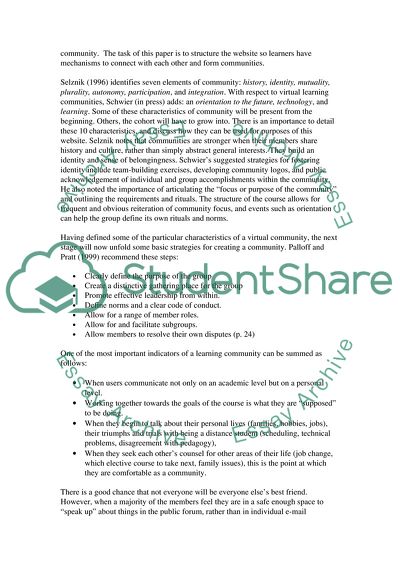Cite this document
(The Websites Dynamic Learning Areas Case Study Example | Topics and Well Written Essays - 2156 words, n.d.)
The Websites Dynamic Learning Areas Case Study Example | Topics and Well Written Essays - 2156 words. Retrieved from https://studentshare.org/information-technology/1551197-computing-dissertation-written-report
The Websites Dynamic Learning Areas Case Study Example | Topics and Well Written Essays - 2156 words. Retrieved from https://studentshare.org/information-technology/1551197-computing-dissertation-written-report
(The Websites Dynamic Learning Areas Case Study Example | Topics and Well Written Essays - 2156 Words)
The Websites Dynamic Learning Areas Case Study Example | Topics and Well Written Essays - 2156 Words. https://studentshare.org/information-technology/1551197-computing-dissertation-written-report.
The Websites Dynamic Learning Areas Case Study Example | Topics and Well Written Essays - 2156 Words. https://studentshare.org/information-technology/1551197-computing-dissertation-written-report.
“The Websites Dynamic Learning Areas Case Study Example | Topics and Well Written Essays - 2156 Words”, n.d. https://studentshare.org/information-technology/1551197-computing-dissertation-written-report.


